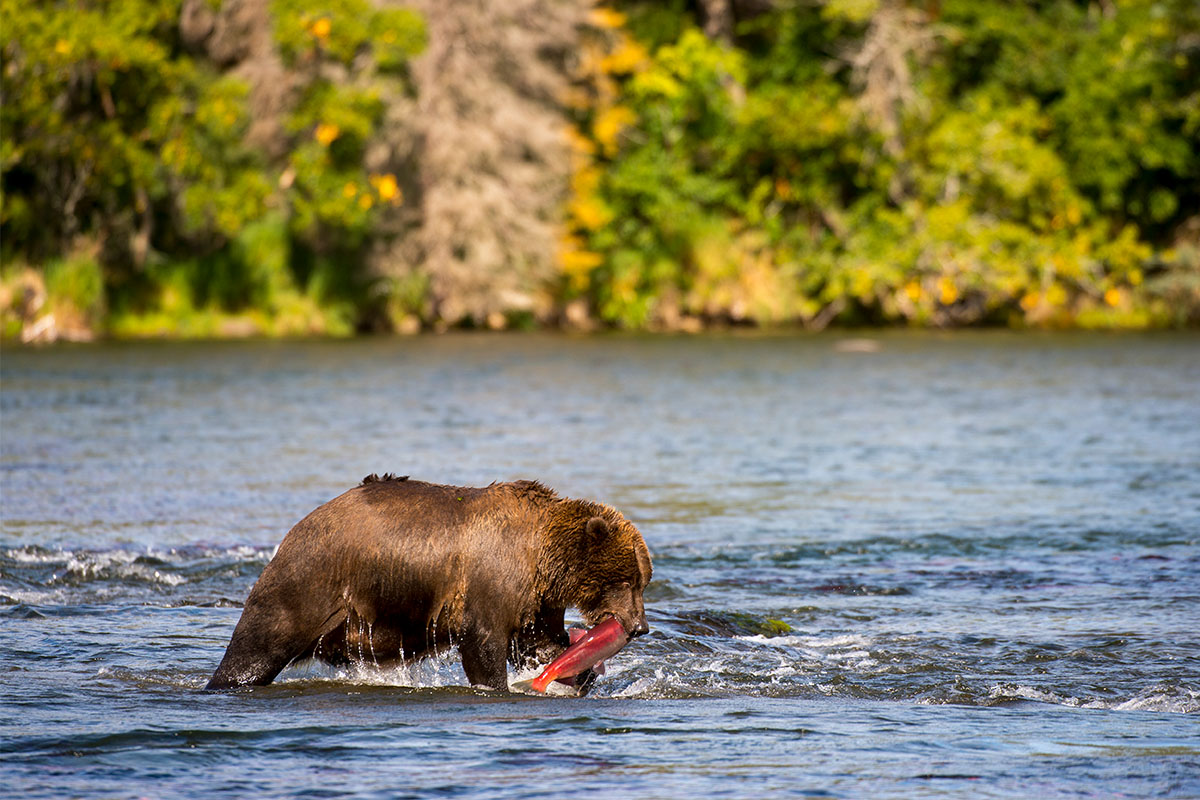Wild Alaskan salmon have never been so tiny. According to recent reporting by Bloomberg Green, the fish that fuels a $2 billion industry in the 49th state — plus billions more dollars throughout the rest of the Pacific Rim — is trending smaller and smaller.
The CEO of Obi Seafoods, Mark Palmer, told Bloomberg Green that weighty, four-pound sockeye once comprised “as much as 70% of each season’s Bristol Bay catch.” These days, it’s less than half. That means less yield for anglers and more headaches for researchers, who are unsure exactly why this is happening and concerned about the environmental implications.
Smaller fish seems to correlate to smaller populations of fish — salmon runs are sparse these days, with the populations of four different salmon species all on the decline over the last 30 years. Overfishing hasn’t helped; neither has agriculture, mining, habit degradation due to dams, blocked access to the sea, warmer rivers from ice melt. Salmon are eager travelers: they head from freshwater rivers to the Pacific, then back to the rivers. That journey is particularly perilous in an age of rampant climate change, and field biologists have noted that salmon seem to be returning from the ocean at a younger age.
Why? Unclear. But it’s likely behind the disturbing trend in smaller size. And the butterfly effect is massive. It means a smaller fillet on a night out in San Francisco, sure, but it also means a battle for limited nutrients between the animals that catch salmon for sustenance, like grizzlies or eagles.
All hope isn’t lost. This is one situation where the interests of so many groups — the fishing industry, governmental researchers, indigenous groups — are aligned. But per usual with environmental crises, the clock is ticking and protective measures need to be levied as soon as possible.
Thanks for reading InsideHook. Sign up for our daily newsletter and be in the know.



















